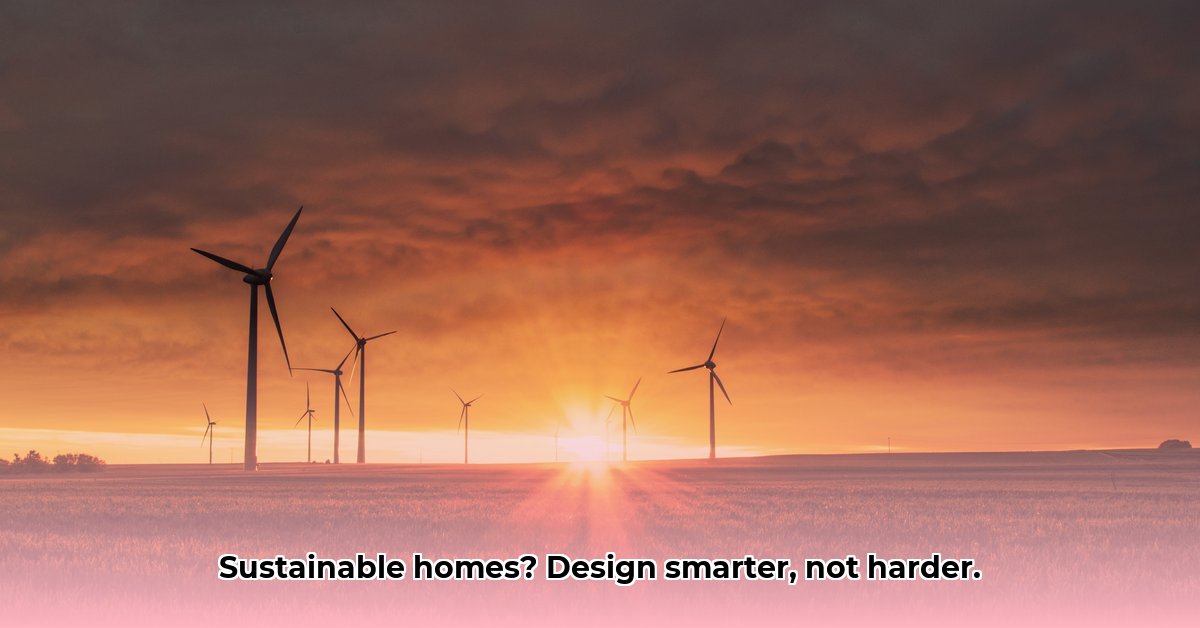Want to build a home that’s both comfy and kind to the planet? It all begins with the blueprint! This guide shows you how to design a floor plan that saves energy – and money – without sacrificing style. We’ll walk you through practical strategies to maximize sunlight, use the sun’s heat wisely, and make smart choices about your home’s design. We’ll cover everything from selecting the right materials to integrating technology, providing actionable steps that homeowners, builders, and architects can implement. For optimal HVAC placement, see this helpful guide on HVAC layout. Let’s build a better future, one energy-efficient home at a time!
Energy-Efficient Floor Plan Design: A Sustainable Architecture Guide
Creating a home that’s both comfortable and environmentally responsible is now more achievable than ever. This guide focuses on energy-efficient floor plan design, which isn’t just about reducing your monthly bills. It’s about embracing a greener future by designing homes that work with nature, minimizing your carbon footprint, and increasing long-term property value. Designing a building with net zero environmental impact creates sustainable architecture.
Understanding the Basics of Energy-Smart Home Design and Building Orientation
Think of your home as a complex system where different elements interact to influence its overall efficiency. To maximize energy performance, you need to understand how factors like solar access, prevailing winds, and local climate affect your home. A well-designed home in a mild climate will differ greatly from a home in a region with extreme seasonal conditions.
Passive solar design is an essential consideration. This involves strategically positioning windows and living spaces to harness the sun’s energy for heating in the winter and minimizing solar heat gain during the summer. This results in reduced reliance on mechanical heating and cooling systems. Maximize natural light and proper insulation creates a comfortable interior while minimizing energy consumption.
Designing Your Home for Maximum Efficiency: Practical Steps for Thermal Comfort
Let’s get into the specifics of designing an energy-efficient home. Here’s a step-by-step guide:
- Think Small (But Smart): Smaller homes require less energy for heating and cooling. Carefully evaluate your space requirements before finalizing your floor plan. Consider multi-functional spaces and flexible layouts to minimize the overall footprint of your home. A reduction of 10-15% in square footage can result in a significant decrease in long-term energy consumption.
- Harness Solar Energy: The orientation of your house plays a critical role in its energy performance. Orient your home to minimize direct sunlight exposure during the hottest months and maximize solar gain during the winter months. This can be achieved through careful site planning and the strategic placement of windows and shading devices. Aim for a south-facing orientation in the Northern Hemisphere.
- Optimize Window Placement and Glazing: Windows provide natural light and ventilation, but they can also be a source of heat loss or gain. Choose energy-efficient windows with low-E coatings and insulated frames to minimize heat transfer. Strategically position windows to capture winter sunlight while reducing heat gain during the summer. Consider double- or triple-paned windows filled with argon gas for optimal insulation.
- Leverage Thermal Mass: Materials like concrete, brick, and stone can act as thermal mass, absorbing heat during the day and releasing it slowly at night. This helps to regulate indoor temperatures and reduce the need for mechanical heating and cooling. Incorporate thermal mass strategically into your design, such as concrete floors or masonry walls, to enhance energy efficiency.
- Maximize Insulation: Insulation acts as a barrier to heat flow, keeping your home warm in the winter and cool in the summer. Use high-performance insulation materials with appropriate R-values to minimize heat loss through walls, ceilings, and floors. Proper insulation can significantly reduce energy consumption and improve thermal comfort.
- Seal Air Leaks: Air leaks can account for a significant portion of energy loss in a home. Carefully seal any gaps or cracks in the building envelope to prevent air infiltration and exfiltration. Use caulk, weather stripping, and sealant to seal around windows, doors, and other openings. Proper air sealing improves energy efficiency and indoor air quality.
- Promote Natural Ventilation: Natural ventilation can reduce your reliance on air conditioning. Design your home to take advantage of prevailing winds and create cross-ventilation pathways. Operable windows, skylights, and strategically placed vents can promote natural airflow and keep your home cool and comfortable.
Material Matters: Choosing Wisely for Sustainable Design
The selection of building materials significantly impacts the environmental footprint and energy performance of your home. Prioritize sustainable, locally sourced materials whenever possible to reduce transportation emissions and support local economies. Consider materials like reclaimed wood, bamboo, recycled content products, and low-VOC paints and finishes.
Understanding Embodied Carbon and Life Cycle Assessment
Embodied carbon refers to the greenhouse gas emissions associated with the extraction, manufacturing, transportation, and disposal of building materials. Minimize embodied carbon by selecting materials with low carbon footprints and prioritizing sustainable sourcing and manufacturing processes. Conduct a life-cycle assessment to evaluate the environmental impact of your material choices and identify opportunities for improvement.
Real-World Success Stories: Proof That it Works
For example, a home built with passive solar design, high-performance insulation, and energy-efficient windows achieved a 50% reduction in energy consumption compared to a standard home. These success stories demonstrate the effectiveness of energy-efficient design strategies and their potential to create more sustainable and comfortable living spaces.
Future Trends: Innovations on the Horizon
Sustainable architecture is a rapidly evolving field, with new technologies and innovations emerging all the time. Explore advancements in smart home technology, advanced building materials, and renewable energy systems such as solar panels, energy storage solutions, high-efficiency HVAC systems, and smart home automation technologies.
Weighing the Pros and Cons: Different Approaches Compared
Here’s a quick look at some common approaches and their trade-offs:
| Design Approach | Advantages | Disadvantages |
|---|---|---|
| Compact Design | Lower energy use, reduced materials, smaller environmental footprint | May feel cramped for larger families, less space for personal items |
| Passive Solar Design | Reduced heating/cooling costs, natural light | Requires careful orientation and may need summer shading solutions |
| High-Performance Insulation | Improved comfort, lower energy bills | Higher initial cost |
| Smart Home Technologies (Thermostats, etc.) | Automated energy management, enhanced efficiency, convenient controls | Higher upfront cost, potential technical glitches |
| Renewable Energy Systems (Solar Panels) | Reduced reliance on fossil fuels, lower energy costs | Higher upfront cost, weather-dependent |
Designing an energy-efficient home requires a collaborative effort between homeowners, architects, builders, and other professionals. Work with experienced professionals who understand sustainable design principles and can help you achieve your energy efficiency goals. Ask questions, explore different options, and make informed decisions that align with your needs, budget, and lifestyle.
How to Calculate Embodied Carbon in Sustainable Home Design and Material Selection
Designing energy-efficient homes involves understanding the embodied carbon—the carbon footprint of building materials. It’s a critical factor in sustainable architecture, often overshadowing operational energy use. Let’s delve into how to calculate this crucial metric and minimize its impact.
Understanding Embodied Carbon and Life Cycle Assessment
Before diving into calculations, let’s clarify what embodied carbon encompasses. It represents the greenhouse gas emissions generated during the entire lifecycle of a building material, from extraction of raw materials to manufacturing, transportation, and eventual disposal or recycling. Materials like concrete and steel are major culprits, contributing significantly to a building’s overall carbon footprint.
Methods for Calculating Embodied Carbon and Environmental Impact
Several methods exist for how to calculate embodied carbon in sustainable home design. These include process-based life cycle assessment (P-LCA), input-output LCA (IO-LCA), and hybrid approaches. Each method has its strengths and weaknesses. hybrid approaches combine both for a balanced result. For homeowners and smaller projects, simplified tools and online calculators often suffice.
Utilizing Tools and Resources for Green Building
Several resources and tools simplify how to calculate embodied carbon in sustainable home design. One prominent tool is the EC3 calculator, offering a streamlined method to assess embodied carbon for a project. However, the accuracy of the calculations depends on the completeness and accuracy of the data provided. The use of Environmental Product Declarations (EPDs) is vital for accurate assessments. These documents provide life cycle data from the manufacturers of the materials.
Design Strategies to Reduce Embodied Carbon and Greenhouse Gas Emissions
Minimizing embodied carbon isn’t solely about calculations; it’s about strategic design choices. Here are some key strategies:
- Optimize material quantities: Careful design can reduce material needs.
- Prioritize low-embodied carbon materials: Choose materials with lower carbon footprints, such as sustainably harvested timber, recycled steel, or low-cement concrete.
- Reduce transportation distances: Specify using locally sourced materials whenever feasible.
- Embrace reuse and reclamation: Incorporate reclaimed or recycled materials into the design whenever possible.
- Careful material selection: Utilize durable materials with a long lifespan
Key Takeaways:
- Embodied carbon significantly impacts a building’s overall carbon footprint.
- Strategic design choices, including material selection and optimization, are essential for reducing embodied carbon.
- Accurate assessment of embodied carbon is a key step towards achieving sustainability targets in the built environment.
Proven Tactics for Maximizing Natural Light and Energy Savings in Your Home Design
Designing for natural light isn’t just about aesthetics; it’s about creating healthy
- Modern Kitchen Backsplash Ideas To Inspire Your Refresh - December 19, 2025
- Modern Backsplash Ideas: A Guide to Todays Kitchen Trends - December 18, 2025
- Ceramic Kitchen Wall Tiles: Style and Protection for Your Walls - December 17, 2025









